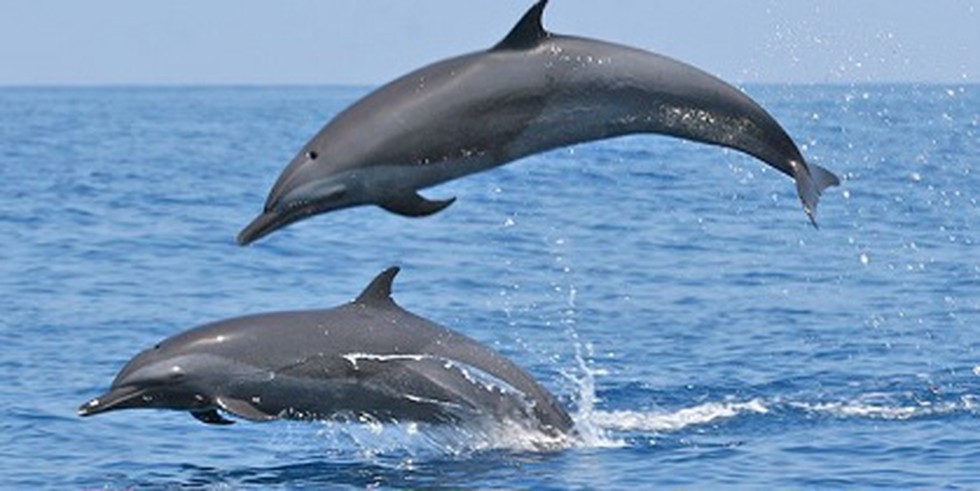
Introduction:
In a historic first, the Ganges river dolphin (Platanista gangetica) was tagged using satellite technology on December 18, 2023, in Assam. This significant step is a part of Project Dolphin, aimed at conserving India’s National Aquatic Animal. Here’s everything you need to know about the Ganges river dolphin, its conservation efforts, and its relevance to UPSC CSE (Civil Services Examination).
The Ganges River Dolphin: A National Treasure
The Ganges river dolphin was declared India’s National Aquatic Animal in 2009, a move to raise awareness about its conservation. The species inhabits the Ganga-Brahmaputra-Meghna river systems and the Karnaphuli-Sangu rivers in the Indian subcontinent. It is one of only five species of river dolphins globally.
- Conservation Significance: The Ganges dolphin is critically important due to its role in maintaining the ecological balance of river ecosystems.
- Appearance & Behaviour: These dolphins are typically shy and solitary, often found in small groups. They have a distinctive long beak, and unlike marine dolphins, their eyes are adapted for river water, making them blind.
Satellite Tagging and Its Importance
The satellite tagging exercise aims to understand the dolphins’ seasonal and migratory patterns, range, distribution, and habitat utilization, especially in fragmented or disturbed river systems. This initiative will help scientists monitor the dolphin’s movements and the health of its habitat.
- Objective: The main goal of tagging is to gain insights into the migratory behavior and distribution of the species, which will guide future conservation strategies.
- Significance for Conservation: Tracking the dolphins through satellite tags will enable scientists to determine if they are being impacted by human activities like river pollution, fishing practices, and habitat destruction.
Conservation Efforts for the Ganges Dolphin
- Legal Protection: Since 1986, the Ganges river dolphin has been protected under the Indian Wildlife (Protection) Act, 1972, with the establishment of sanctuaries like the Vikramshila Ganges Dolphin Sanctuary in Bihar.
- Project Dolphin: Launched in 2020, this project aims to conserve aquatic life in the Ganga and other rivers. The dolphin tagging initiative is part of a broader effort under this project to monitor and protect endangered aquatic species.
Conservation Status
The Ganges river dolphin is listed as Endangered on the International Union for Conservation of Nature (IUCN) Red List, indicating it faces a high risk of extinction in the wild. Conservation initiatives are critical to preserving the species, which has been an important cultural and ecological symbol in India.
Beyond the Nugget: Related Schemes and Technologies
- Rangeen Machhli App: Launched by the Union Minister for Fisheries, this app focuses on promoting the ornamental fisheries sector. It is developed by ICAR-CIFA and aims to provide resources for hobbyists, aquarium shop owners, and fish farmers, promoting local businesses and education in ornamental fish care.
- PM Matsya Sampada Yojana (PMMSY): Launched in 2020, this scheme aims to bring the “Blue Revolution” through sustainable development of India’s fisheries sector. It focuses on enhancing the fisheries value chain, ensuring socio-economic welfare for fishers, and supporting infrastructure development.
- Pradhan Mantri Matsya Kisan Samridhi Sah-Yojana (PM-MKSSY): This sub-scheme of PMMSY aims to formalize the fisheries sector, supporting micro and small enterprises involved in fish farming and aquaculture.
Key Points to Remember:
- National Aquatic Animal: The Ganges river dolphin is India’s National Aquatic Animal, highlighted to emphasize the importance of conserving aquatic biodiversity.
- Satellite Tagging: The first-ever satellite tagging of this species will help researchers study its migratory patterns and protect its ecosystem.
- Government Initiatives: The launch of Project Dolphin, PMMSY, and the Rangeen Machhli app shows the government’s commitment to the conservation of aquatic species and the promotion of sustainable fishing practices.
Relevance to UPSC CSE
- Conservation of Biodiversity: The conservation of the Ganges river dolphin falls under Environment and Ecology, a key topic in UPSC GS Paper III.
- Government Schemes: The PMMSY and PM-MKSSY are crucial schemes under the Agriculture and Environment sections for UPSC CSE preparation.
- Science and Technology: The use of satellite tagging to track wildlife is an application of science and technology in conservation, an important area for the General Studies paper.
Conclusion:
The satellite tagging of the Ganges river dolphin is a monumental step in the conservation efforts of one of India’s most iconic aquatic species. For UPSC aspirants, understanding the ecological importance of the species and the associated government initiatives will help in the preparation for questions on environmental conservation, wildlife protection, and government schemes.
Also Read: India State of Forest Report (ISFR) 2023
Follow Fusion IAS


